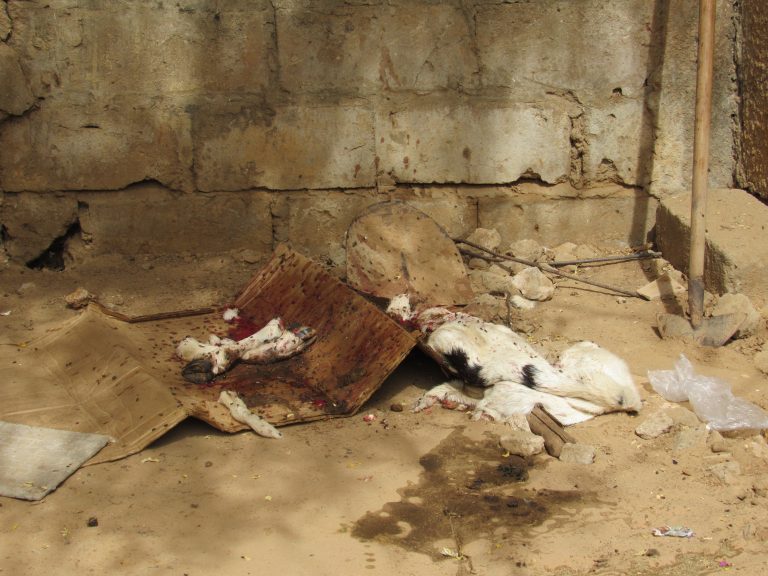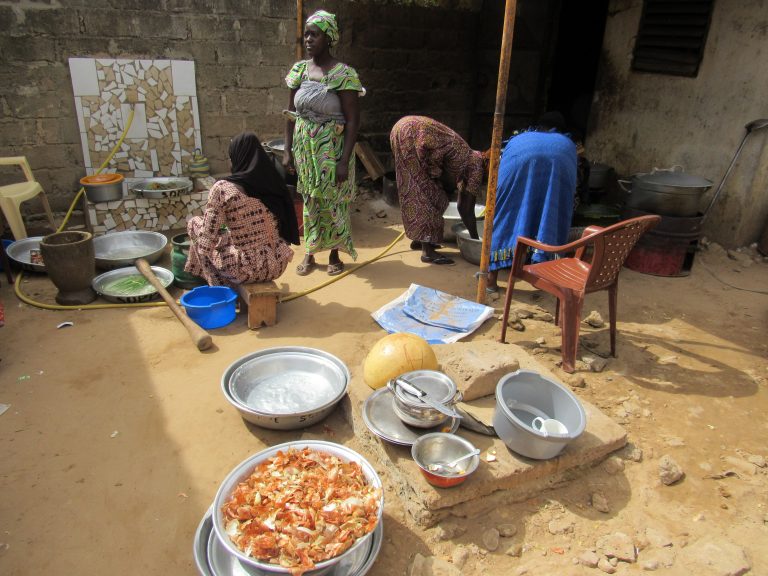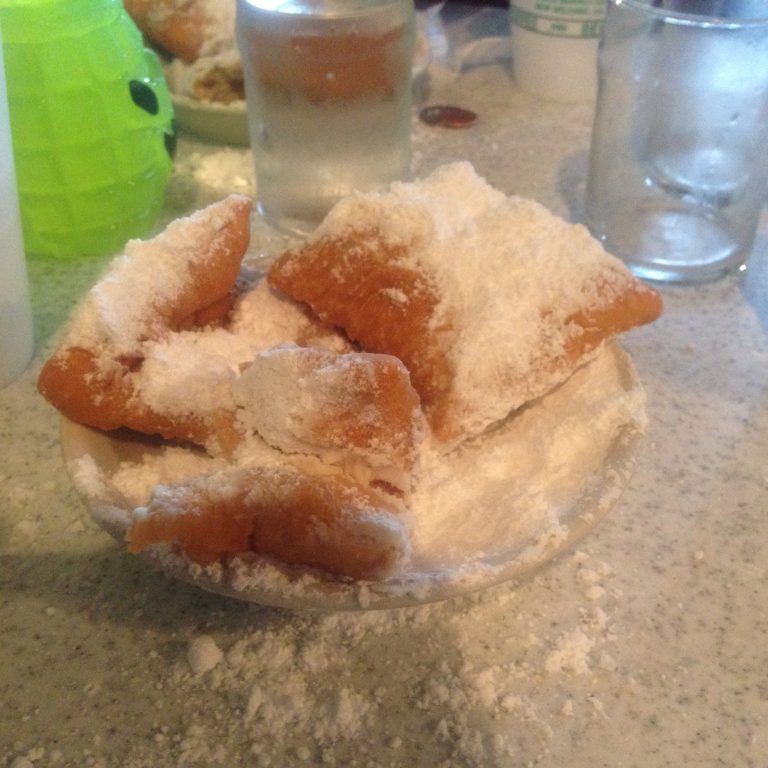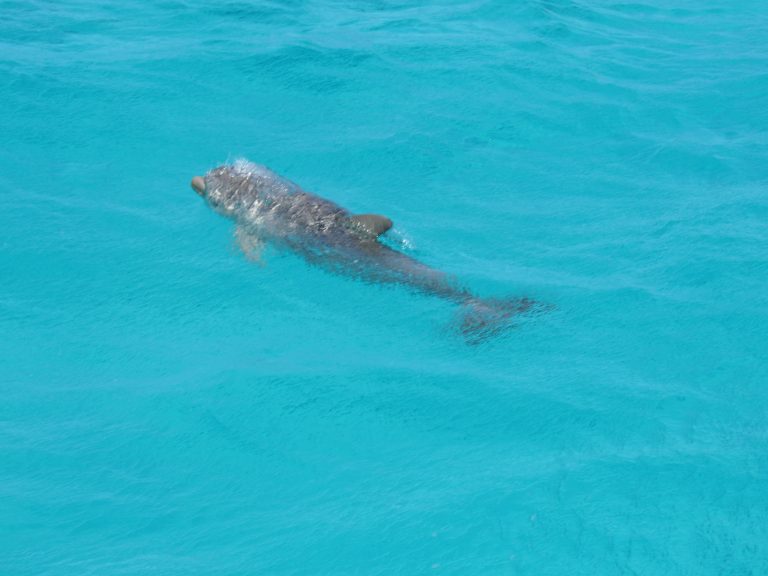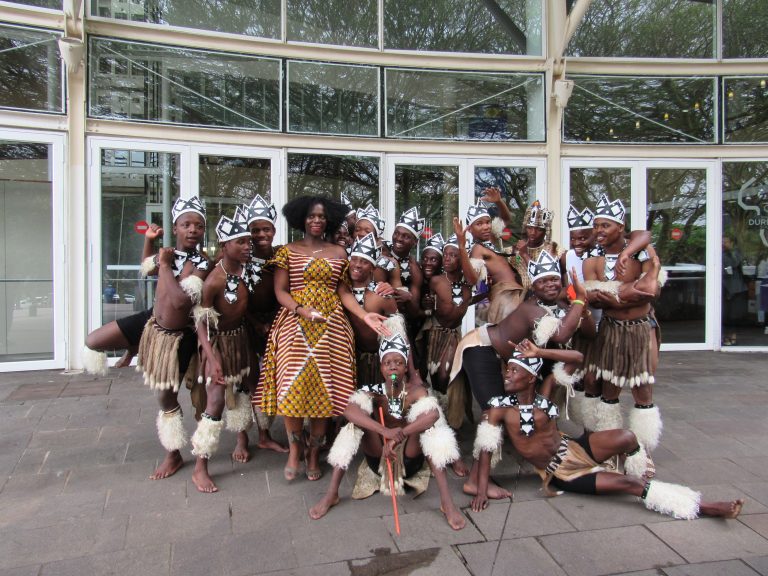The post Senegalese Cuisine: Where Food and Culture Intersect first appeared on The Travel Sista.
]]>I arrived in Dakar around 2:00 am, and my hosts Phyllis and Eddy from Diasporic Soul were ready for me with dibi and rice to feed my tummy. Dibi, one of Senegal’s favorite street foods, is grilled lamb, cut into small pieces and usually served with grilled onions, mustard sauce and bread. We stayed up talking until after 5:00am and I got a firsthand taste of Senegalese teranga too (Teranga is a Wolof word meaning hospitality).
I woke up in early afternoon to the most amazing smell and learned that I would be treated to Senegal’s national dish, Thebu Jenn. Thebu Jenn is a flavorful fish and rice dish served with a variety of vegetables and it comes in white and red (tomato-based) variations. I had the white and it was heavenly. It was served with bissap sauce, made from hibiscus leaves with the consistency of creamed spinach, and xoon, the coveted crunchy rice from the bottom of the pot.
Over the next few days, I had Yassa Poulet and Poisson – fish and chicken versions of the popular dish made with onions, lemon juice and garlic and served with rice.
But the highlight was my attendance at a “ngente” or baby naming ceremony. It was a special day where family and friends gathered for a day of good food and celebration. After the baby girl was named, the men killed two sheep in the baby’s honor (I didn’t watch and only saw after it was done). Then the ladies all went to work preparing the meal. They cleaned the lamb, cut vegetables, and cleaned and cooked rice. It was fascinating to watch them work together and prepare a meal for 30+ people, all while dressed to the nines. The final product, Thebu Yapp, was the best meal I had during my time in Senegal.
Have you tasted Senegalese cuisine? What is your favorite dish? Share your comments below.
Share This
The post Senegalese Cuisine: Where Food and Culture Intersect first appeared on The Travel Sista.
]]>The post Senegal Travel Guide: Planning a Trip to Dakar first appeared on The Travel Sista.
]]>
African Renaissance Monument
Senegal is a country in West Africa, which surrounds The Gambia on three sides and is bordered on the north by Mauritania, on the east by Mali, and on the south by Guinea and Guinea-Bissau. Dakar is the capital and largest city of Senegal, and it sits on the Cap-Vert peninsula, the westernmost point of Africa.
Although Senegal is a majority Muslim country, with more than 90% of the population practicing Islam, the vibe is vibrant and diverse. Culturally, the traditional/religious and the modern/worldly live side by side in relative peace. It’s not uncommon to see men in traditional garb prostrate on the sidewalk to pray, while others dressed in secular clothing pass by. Likewise, one may hear the Muslim Call to Prayer while exiting a nightclub in the early morning.
But despite this clash of cultures, one thing seems universal — the Senegalese take great pride in their appearance. The women dress in elaborate, colorful outfits with matching headwraps, even for a trip to the market. The men are earnest about staying in shape and most are tall, lean and muscular. The Senegalese take their reputation for great hospitality just as seriously. They are known for their “teranga”, a Wolof word which characterizes the value of sharing and treating the other as the most important person in the world. If you’re lucky enough to befriend a Senegalese, chances are you’ll be treated to a cultural or culinary treat. This travel guide will help you plan your trip to Senegal so you can experience Teranga firsthand.
GETTING THERE AND GETTING AROUND
At only 7 hour and 15 minutes from New York to Dakar, a flight to Senegal is one of the shortest from the United States to the African continent. Delta and South African Airways fly direct to Dakar from the United States. Jet Blue, Emirates, Turkish Airlines, and a host of other airlines offer connecting flights to Dakar.
The Léopold Sédar Senghor International Airport is the largest airport in Senegal and is situated near the town of Yoff, north of Dakar. The drive to the city is approximately 20 minutes. Taxis are readily found outside the airport and rates should be negotiated beforehand; fares to most locations in the city should be no more than 3,000 to 5,000 CFAs. Taxis are cheap, safe and everywhere making it easy to explore the city.
VISAS
Senegal no longer requires visas for U.S. citizens for stays of fewer than 90 days. For longer stays, U.S. citizens should obtain visas from the Senegalese Embassy in Washington DC or the Senegalese Consulate in New York.
CURRENCY
The official currency of Senegal is the West African CFA Franc (CFA), pronounced SAY-fah. CFA notes are available in denominations of 10,000, 5,000 and 1,000 and coins are available in denominations of 500, 200, 100, 50, 25, 10, 5 and 1. At current exchange rates (as of 3/1/2017), 1,000 CFA equal approximately $1.60 USD. Currency can be exchanged in banks and exchange bureaus in Dakar.
WEATHER
Senegal is mainly a sunny and dry country with well-defined dry and humid seasons. The dry season (December to April) is dominated by hot, dry, harmattan wind and temperatures reach an average of 78 degrees high and 64 degrees low. The rainy season runs from June to October, with August and September being the rainiest months. Temperatures during the rainy season average 86 degrees high and 76 degrees low.
WHERE TO STAY
Most of Dakar’s Western-style hotels are located either in the downtown area or in the beachfront neighborhoods of Les Almadies and Ngor. Airbnbs and vacation rentals are also lodging options.
LANGUAGE
Senegal is a multilingual country. As a former French colony, French is the official language of Senegal. Wolof is the most widely spoken language, either as a first or second language. Many other native languages are spoken or recognized. English speakers are limited so you would do well to learn a few words of French or Wolof before you arrive. Common greetings include Asalaam Ailaikum (Arabic), Nan ga Def (Wolof), and Bonjour (French).
ACTIVITIES
Goree Island (“Ile de Gorée”)/House of Slaves
Goree Island is a UNESCO World Heritage site and the location of the House of Slaves, a museum and memorial to the Atlantic slave trade. The House of Slaves is best known for its Door of No Return, meant to memorialize the final exit point of captured slaves before their forced journey to the Americas. The House of Slaves is open daily, except Mondays, from 10:30 am to 6:00 pm. Ferries to the Island can be taken from the terminal north of Place de l’Independance and cost 5,200 CFA for non-residents. The trip takes approximately 20 minutes.
Lake Retba or Pink Lake (“Lac Rose”)
Nestled between white sand dunes and the Atlantic Ocean, the Pink Lake is named for its pink waters caused by Dunaliella salina bacteria. It’s known both for its unusual color and its high salt content, which at 40% in some areas, is comparable to the Dead Sea. The pink color is more visible during the dry season (from November to June) and is less visible during the rainy season (July to October). Boat tours of the lake and 4 x 4 tours of the salt dunes are available and prices are negotiable. Be sure to bring your hard bargaining skills because tourist rates are highly inflated. The Pink Lake is located about an hour outside of Dakar.
African Renaissance Monument
This massive bronze statue sits on top of the twin hills of Collines des Mamelles on the outskirts of Dakar. The monument is a display of African pride, dedicated to the end of slavery and to Africa’s emergence from the European regimes that once ruled the continent. It is the largest statue in Africa.
IFAN Museum of African Arts (“Musée Théodore Monod d’Art Africain”)
The IFAN Museum is one of the oldest art museums in West Africa and it includes important art collections from across Francophone Africa. It’s one of the regular locations of the Dakar Biennale (“Dak’Art – Biennale de l’Art Africain Contemporain”), a major art exhibition by contemporary African and diaspora artists that takes place every two years.
Shopping
Dakar has a number of traditional African markets — Sandaga, HLM, Kermel and Soumbedioune — that sell seafood, vegetables, fabric, jewelry, leather goods, and artwork. Marché Sandaga is the largest and most hectic with three levels of stalls. Marché HLM is geared towards fabric and is the place to go to buy African wax print. Tailors are also available to custom fit and tailor African fashions. Marché Kermel is located near the city center and has quality artisanal goods and textiles. Marché Soumbedioune is a popular evening fish market. Fresh caught fish and seafood is hauled in between 4:00 and 6:00 pm and grilled right on the shore.
Corniche
The Corniche is the wide boulevard that runs along the Atlantic coast. It has sweeping views and is a popular place for locals and tourists to take a stroll. It’s also a popular place for locals to exercise at the large outdoor gym.
CUISINE
If you like your food spicy and well-flavored, you will thoroughly enjoy Senegalese cuisine. Senegal’s most popular dishes are made with fish, lamb or chicken and usually include rice and vegetables. As a legacy of French rule, Senegal’s bakeries serve baguettes, croissants and other pastries that rival those in France.
Meals
- Thiebou Jenn (also spelled as Thieboudienne, Tiep Bou Dienn, and Ceebu Jenn) is Senegal’s national dish. There are white and red (tomato-based) versions made with fish, rice, and a variety of vegetables like carrots, eggplant, cabbage, okra, sweet potatoes and cassava. It’s often served with a bissap sauce.
- Thiebou Yapp is a variation of Thiebou Jenn made with seasoned lamb and rice.
- Yassa is a spicy, lemon chicken or fish dish with carmelized onions served over rice.
- Mafé is a stew of chicken, fish, or lamb simmered in peanut butter sauce with vegetables such as yuca, yams, potatoes, carrots, or turnips.
Drinks
- Bissap is a juice made from hibiscus leaves.
- Gingembre is a tangy drink made out from ginger root and sugar.
- Bouye is a drink made from the fruit of baobab trees. The pulp is pounded into a frothy, opaque drink that tastes slightly like a banana smoothie.
- Ataaya is a sugary mint tea usually offered to friends and visitors. It’s served in three stages called the three concoctions.
NIGHTLIFE
On weekends, Dakar has a vibrant nightlife that doesn’t get jumping until well after midnight and continues until 6:00 or 7:00 am. The strip of nightclubs on Route de Ngor in Les Almadies is a popular hotspot on Friday and Saturday nights. Thiossane, owned by Youssou N’Dour, a famous West African musician, is also a popular nightspot. He often performs at the club on Saturday nights when he is not on tour.
OTHER NEARBY AREAS TO VISIT
The Petite Coast (“Petit Côte”)
The Petite Côte is located about 45 miles southeast of Dakar and is considered one of Senegal’s best beach areas. The drive is an easy 1.5 to 2-hour drive from the city. The main tourist hub is the sandy coastline that runs from La Somone to Saly. Places to visit include:
Reserve de Bandia
The Bandia Reserve is a small private reserve with a variety of indigenous and non-indigenous wildlife, including woodland birds, green monkeys, patas monkeys, warthogs, white rhinoceros, giraffe, kudu, eland and impala.
Saly
Saly is often called Senegal’s answer to the French Riviera and in fact is a popular destination for French and European tourists. The beachside town is the center of tourism in the Petite Côte and home to many hotels, nightclubs, bars, restaurants, shops and a casino.
La Somone
Somone is more of a low-key retreat, less glitzy and more chilled than nearby Saly. Somone’s best-known landmark, the Somone Lagoon, is an area of natural beauty at the mouth of the Atlantic ocean. A boat tour (costing 15,000 CFA) showcases a birdlife reserve and the mangrove ecosystem.
Share ThisThe post Senegal Travel Guide: Planning a Trip to Dakar first appeared on The Travel Sista.
]]>The post Birthday Reflections: Good Food and Good Times first appeared on The Travel Sista.
]]>I started the year off at Mardi Gras in New Orleans, spending time with family and friends and adding more beads to my already large collection. Every time I go to New Orleans, I always over indulge and this time was no exception. Between the po-boys, beignets and red beans and rice, I got my fill of N’awlins cuisine and gained a pound or two in the process.
Next up was Turks and Caicos islands. I spent five days in Providenciales, where I laid eyes on some of the beautiful turquoise water I’ve ever seen. I was lucky enough to encounter JoJo, Grace Bay’s famous dolphin who’s known for approaching humans. He swam up to our boat as if to say hi, then playfully swam away. While there, I also ate some of my favorite Caribbean food – jerk chicken with rice and peas and grilled snapper.
I ended the year on a whirlwind, with jaunts to London, Barcelona, South Africa, Morocco, Senegal and Ghana. I wasn’t a fan of the food in the UK, but Barcelona made up for it. I had an amazing seafood paella which I watched the chef prepare from beginning to end.
But my favorite culinary delights came from Senegal. On my first day, my hosts treated me to Senegal’s national dish, Thieboudienne (aka thebu jenn), a flavorful dish with fish, rice and vegetables. We washed it down with bissap, a drink made from dried hibiscus leaves. During my time in Senegal, I had other delicious meals like Thebu Yapp (a lamb and rice dish) and Yassa Poulet (chicken with onion sauce). Desserts were also heavenly. As a former French colony, one of the vestiges is great boulangeries and patisseries with croissants and pastries that rival those in Paris. Let’s just say that I had more than my fair share.
Looking back on the past year, I’m amazed at the remarkable experiences I’ve had. I met a lot of new people, made a lot of new friends, and today I received birthday messages from all over the globe. It’s a testament to the power of travel and the gifts you receive if you step outside of your comfort zone. Although these gifts aren’t tangible, I cherish them all the same. I look forward to another year of traveling to far off places, eating new foods, and meeting new friends. My big goal this year is to finally tackle Machu Picchu. Wish me luck.
What do you enjoy most about traveling abroad? Share your comments below.
Share This
The post Birthday Reflections: Good Food and Good Times first appeared on The Travel Sista.
]]>
